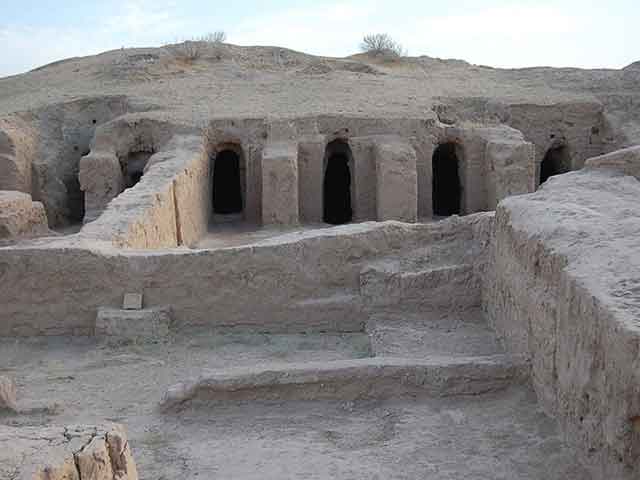Buddhist cult center Karatepa (in translation from the Uzbek "Black Hill") occupies an area of about 7 hectares and is located on a three-part elevation of sandstone, where at one time there were dozens of monastery and temple complexes.
Thanks to the epigraphic data, which were found among the inscriptions on ceramics in different contexts, the term "vihara" - a monastery is repeatedly mentioned, scientists believe that the ground-cave structures of Karatep are monasteries.
Stupas on Karatepe were built of clay, covered with stone cladding, and from above was painted Buddha, people, animals, sacred symbols. This method of erecting stupas was adopted almost in all of Central Asia, a poor stone and wood, but rich in such building material as clay. From the clay was made and sculpture - images of the Buddha, his disciples and admirers. Only occasionally images were carved from limestone. The few fragments found give reason to believe that there was a stone sculpture of Buddha on Karatepe.
In temples and monasteries there is a unique image of the Buddha. On Karatepe, there is a fragment of wall painting, painted with glue paints on the clay foundation, where the Buddha sits in the dhyana position, with a red toga on it. The fresco is half-finished, but it does not interfere with the perception of its harmony and beauty. As if from a semi-non-existence there emerges a calm and affectionate face - as a sign of salvation, as a victory over the enveloped world.



